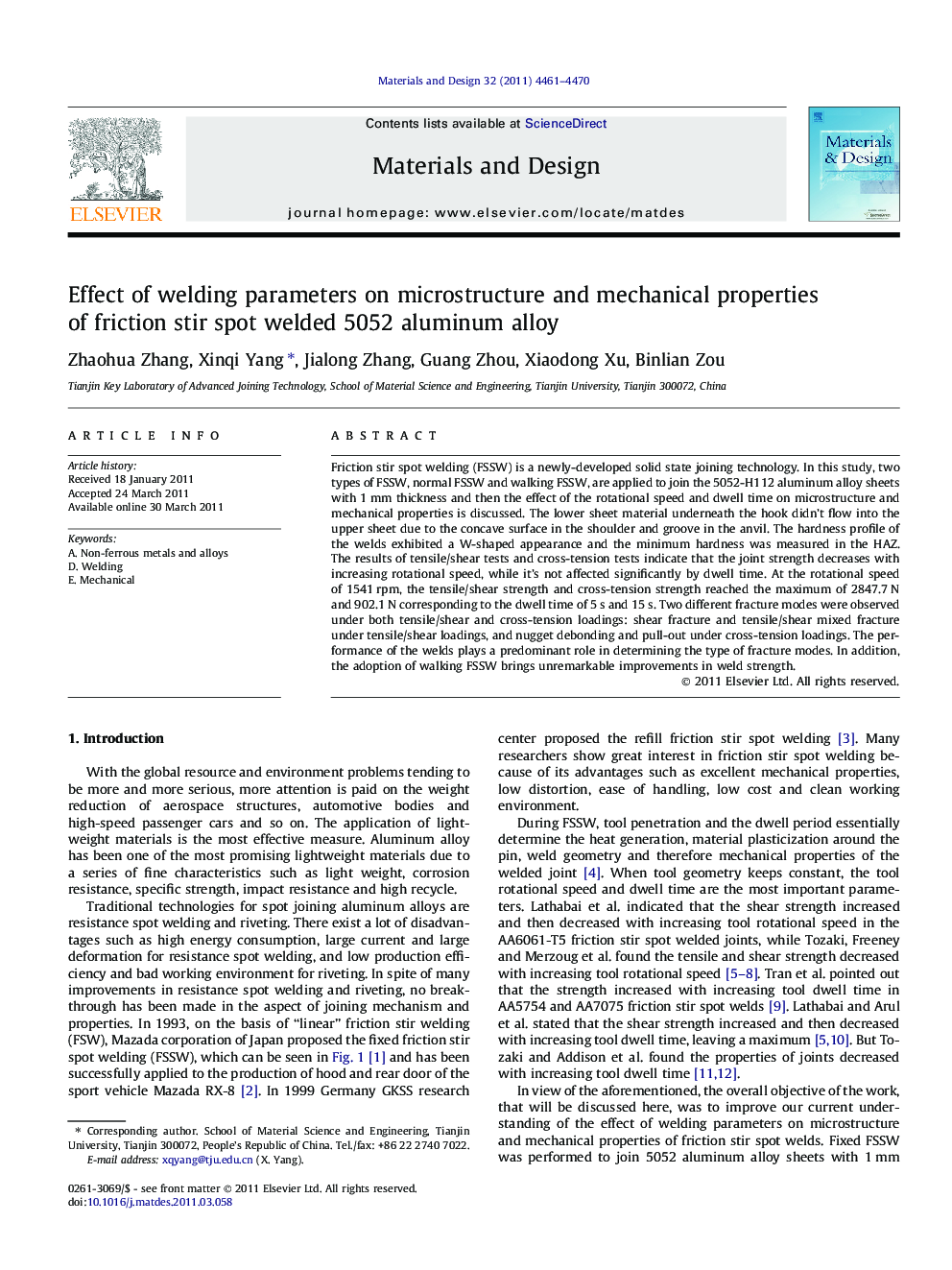| کد مقاله | کد نشریه | سال انتشار | مقاله انگلیسی | نسخه تمام متن |
|---|---|---|---|---|
| 831375 | 1470366 | 2011 | 10 صفحه PDF | دانلود رایگان |

Friction stir spot welding (FSSW) is a newly-developed solid state joining technology. In this study, two types of FSSW, normal FSSW and walking FSSW, are applied to join the 5052-H112 aluminum alloy sheets with 1 mm thickness and then the effect of the rotational speed and dwell time on microstructure and mechanical properties is discussed. The lower sheet material underneath the hook didn’t flow into the upper sheet due to the concave surface in the shoulder and groove in the anvil. The hardness profile of the welds exhibited a W-shaped appearance and the minimum hardness was measured in the HAZ. The results of tensile/shear tests and cross-tension tests indicate that the joint strength decreases with increasing rotational speed, while it’s not affected significantly by dwell time. At the rotational speed of 1541 rpm, the tensile/shear strength and cross-tension strength reached the maximum of 2847.7 N and 902.1 N corresponding to the dwell time of 5 s and 15 s. Two different fracture modes were observed under both tensile/shear and cross-tension loadings: shear fracture and tensile/shear mixed fracture under tensile/shear loadings, and nugget debonding and pull-out under cross-tension loadings. The performance of the welds plays a predominant role in determining the type of fracture modes. In addition, the adoption of walking FSSW brings unremarkable improvements in weld strength.
► Walking FSSW produces a little higher joint strength compared with normal FSSW.
► The dwell time more than 5 s has no effects on joint strength.
► The lower sheet material underneath the hook hasn’t flow into the upper sheet.
Journal: Materials & Design - Volume 32, Issues 8–9, September 2011, Pages 4461–4470